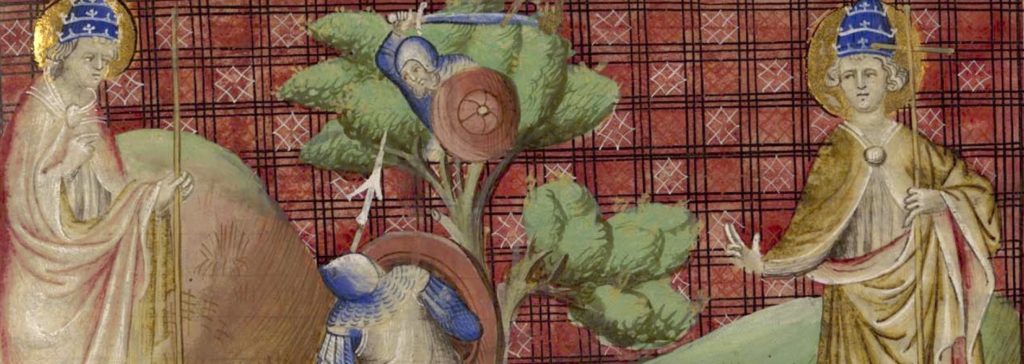This project followed three realms in which the use of the tree was most poignant, anchored by the manuscript L’Arbre des Batailles and Honorat Bovet’s cultural influences. Bovet’s occupation as a prior prompted tracing the place of arborescence in religion, which perpetuates dichotomous categorization of good versus evil, right versus wrong. As a diplomat, we are shown how the tree has become synonymous with the identity of a supreme power, often upholding the moral framework of a given society. Finally, as a well-traveled student, Bovet draws on the tree’s inextricable appearance in the methodologies for accumulating, organizing, and facilitating knowledge, transforming the entity into a tool for learning.
In all, why does this matter?
The tree has become more than just a plant. It represents community and memory, dominating Western thought and reality across diverse fields of study. On a personal level, a tree can reflect emotions through childhood memories or media-enriched feelings. However, in the midst of all this noise, the tree’s true essence as a living being gets lost. The history of arborescence has made us forget that a tree is just a tree. Bovet’s allegory in L’Arbre des Batailles was, in fact, a battleground, reflecting not only society and its wrongdoings but a separate battle conducted between humankind and other living entities on the planet. Now, for the big question: does a tree need to have a meaning? Does it need a why? Can a tree ever be just a tree, or will society always need it to mean something to allow for its coexistence on a planet saturated with humanity’s desire to find higher meaning?
Acknowledgments

I would like to express my sincere appreciation to the esteemed faculty and staff of the Rare Book and Digital Humanities program at l’Université Bourgogne Franche-Comté. Furthermore, I would like to thank all the cultural institutions across the globe for their invaluable contribution to making open-source material and software available online, thus facilitating the endeavors of scholars and artists alike.
Permissions
To the best of this author’s knowledge, the sourced visual and textual material falls under the CC-BY-NC 4.0, Public Domain, or retains no copyright. However, in the interest of academic integrity, it is essential to exercise due diligence and demonstrate respect while utilizing or sharing external content by attributing digitized images to their host institutions. It is also important to note that the author of this text has strictly employed such information for academic purposes only. Please do not distribute any text, images, or third-party content without verifying the distribution policies associated with these source institutions. Each image featured has undergone resizing and contains links to the source material either through the image itself or its description, which accords with the principles of proper credit attribution.
Continuing Education: Start the Conversation
Simply acknowledging the existence of arborescent models and their role in connecting trees to higher meaning is not enough. The importance lies in the questions to follow. How will you make use of this knowledge? Will it inspire you to re-evaluate your understanding of trees? Will it motivate you to explore the topic more deeply? And will it encourage you to see your environment with a fresh perspective?
